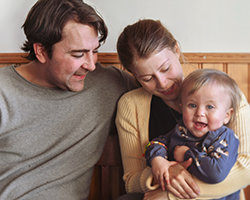WHO/Europe launches ambitious initiative seeking to reduce lives lost to cancer

WHO/Malin Bring
Each day, approximately 13 100 people in the WHO European Region receive the life-changing news that they have cancer. This statistic is compounded by a further 6000 people who lose their lives to the disease every day.
Today, on World Cancer Day, WHO/Europe launches United Action Against Cancer to galvanize support and cooperation from grassroots to governments using a wide variety of underutilized tools with the long-term vision of eliminating cancer as a life-threatening disease in Europe.
While the movement encompasses all of society, the responsibility for tackling cancer lies with policy-makers, who must close gaps in access to care and ensure healthier environments for citizens.
Communicating to the grassroots
Aron Anderson is a cancer survivor who tells his story to inspire countless individuals. He became the first person in a wheelchair to climb Kebnekaise in Sweden and Kilimanjaro in Tanzania. He has also arm-biked from Malmö, Sweden, to Paris, France, and skied across Antarctica to reach the South Pole.
Recently announced as WHO/Europe’s Cancer Ambassador, Aron explained that he is grateful to the health-care system in his home country of Sweden, without which he might not be here today: “Unlike many other children with cancer, I was given a second chance at life – many who go through what I did are not as lucky as I was.”
Introducing Aron, WHO Regional Director for Europe Dr Hans Henri P. Kluge said: “We have a collective dream of living in a Region where cancer deaths are a rare exception, instead of the norm. Aron reminds us that this dream is not impossible, but it does demand that we unite our forces at all levels, from grassroots to governments, and put our knowledge to use, doing what we know works.”
We know what works: signature solutions
WHO has developed a set of signature solutions – evidence-based, cost-effective policies and measures designed to achieve impact at the country level by offering guidance to policy-makers.
These solutions cover the whole cancer continuum, from prevention and early detection through to diagnosis, treatment and palliative care. WHO is also currently developing more advanced and specific solutions for cervical, breast and childhood cancers. These solutions will be rolled out in the coming year with clear, actionable packages.
Prevention is key
Evidence suggests that up to 30% of cancers are caused by the consumption of alcohol and tobacco. Much more can be done to limit the risk factors that lead to cancer. While individuals can take steps to reduce their risks, it is clear that policy-makers need to implement the evidence-based policies which make healthy choices possible. This includes creating urban environments where people can exercise, for example, with more bike lanes, and reducing access to tobacco, alcohol, and foods high in fats, salt and sugar.
“We have to remind policy-makers that we need to think in a 25–30 year cycle,” says Aron. While policy-makers often have shorter-term goals, Aron is clear that this long-term vision reflects that the battle against cancer is “a marathon, not a sprint”, and should be passed down through generations of politicians.
Tackling inequities
Prevention, early detection, diagnosis and treatment are just some of the areas where cancer survival rates are impacted by inequities. Currently, the risk of developing cancer is 3 times higher in northern Europe than central Asia, yet chances of a cure are 2.5 times higher by comparison. This is often a result of differing access to quality diagnosis and treatment.
Furthermore, uptake of vaccines that can reduce the chances of developing cancer, such as those against human papilloma virus (HPV) and hepatitis B, remain too low across the Region, and healthy choices are often considered solely an individual responsibility.
Finally, the majority of national resources are dedicated to cancer treatment, while prevention, early detection and palliative care remain underdeveloped. These are all areas where governments and policy-makers must act to improve cancer control.



